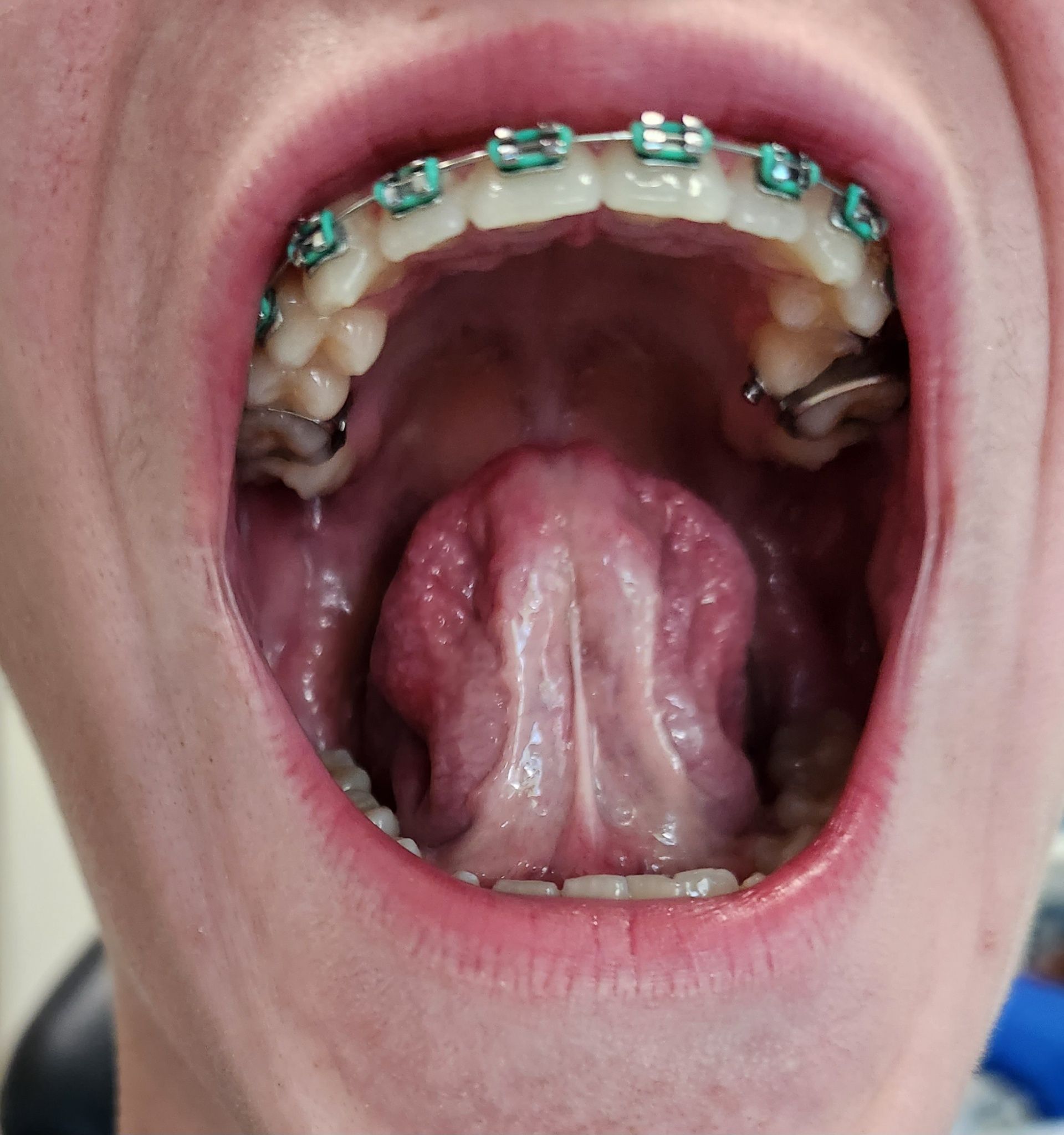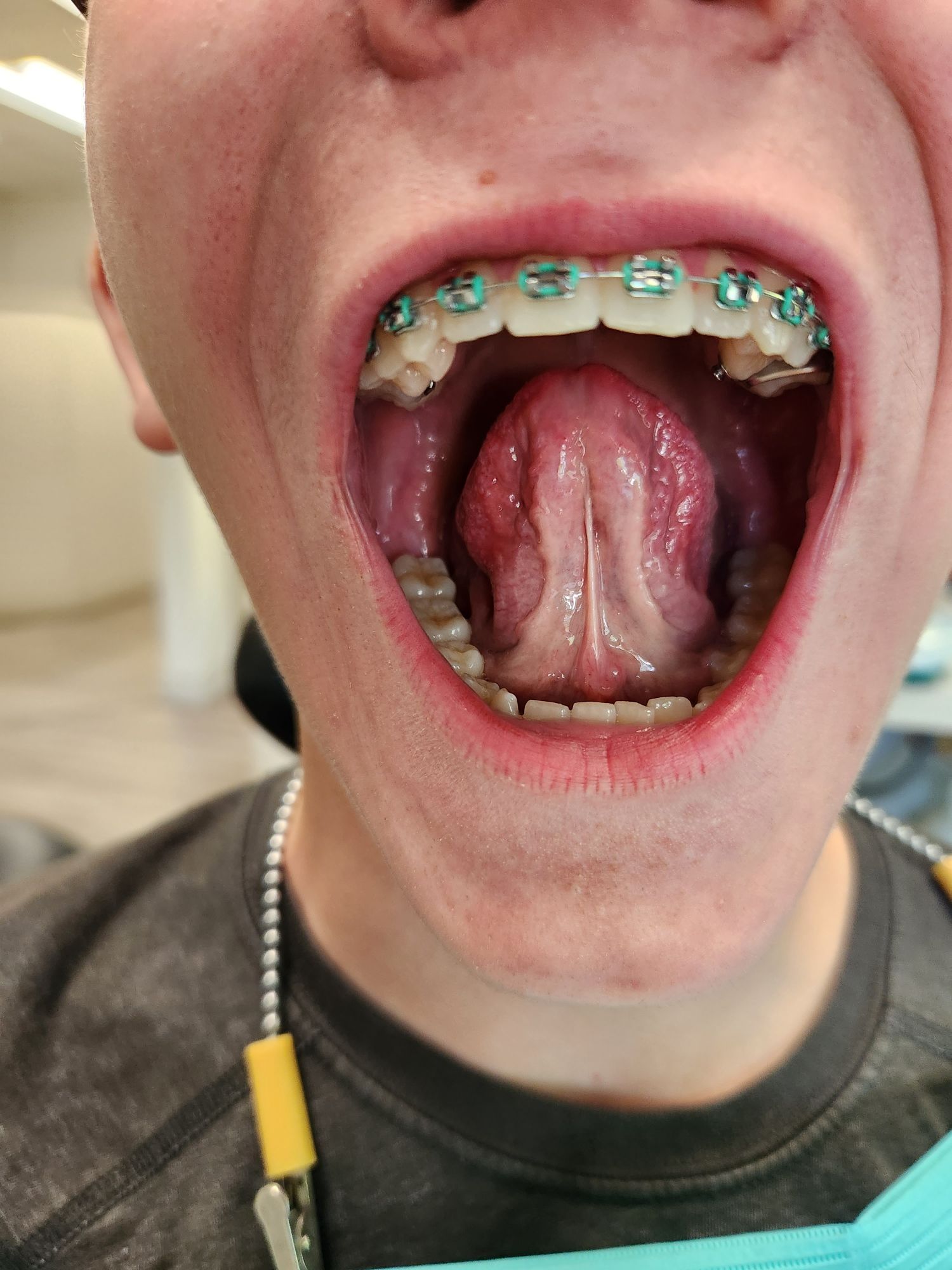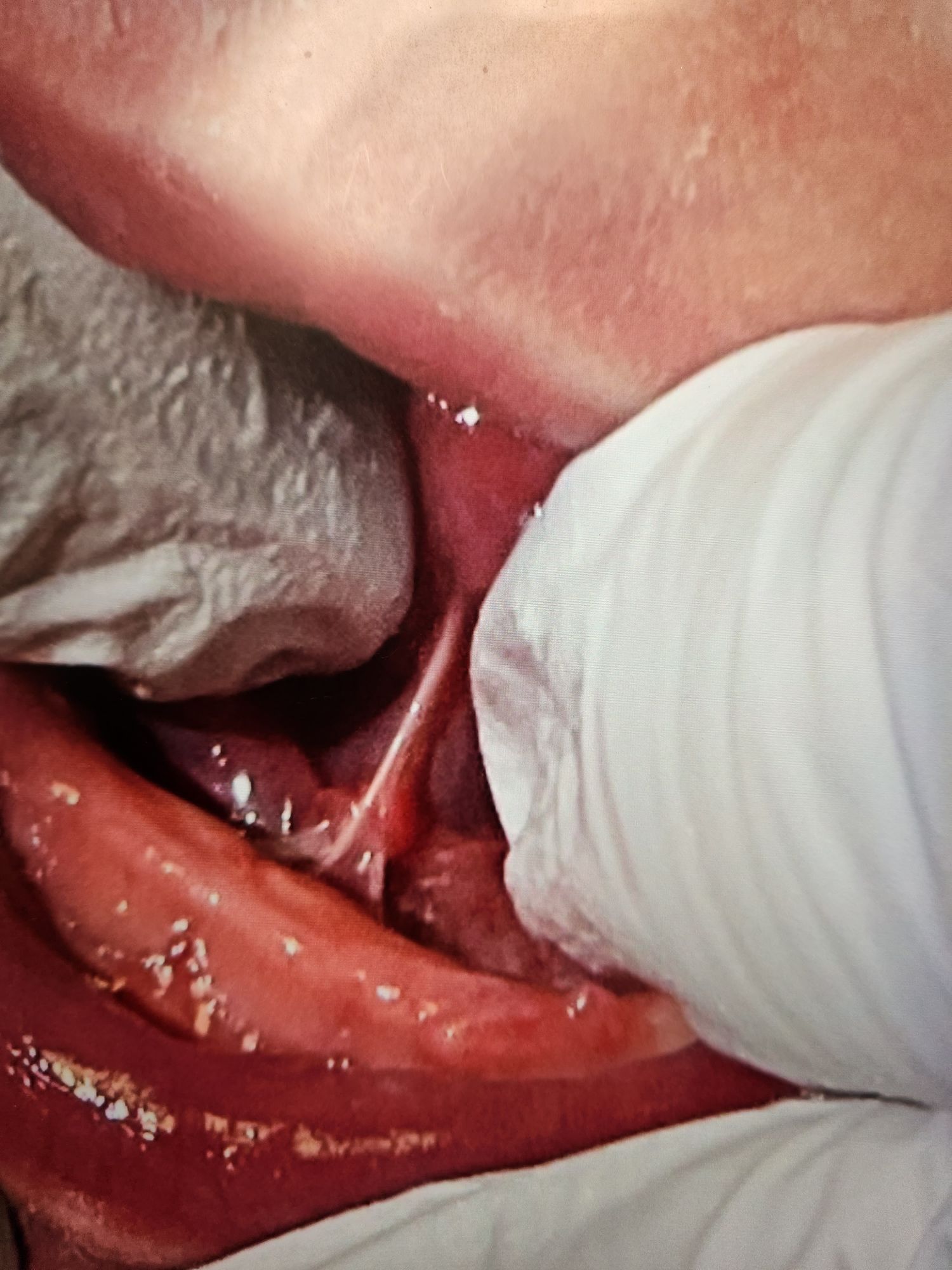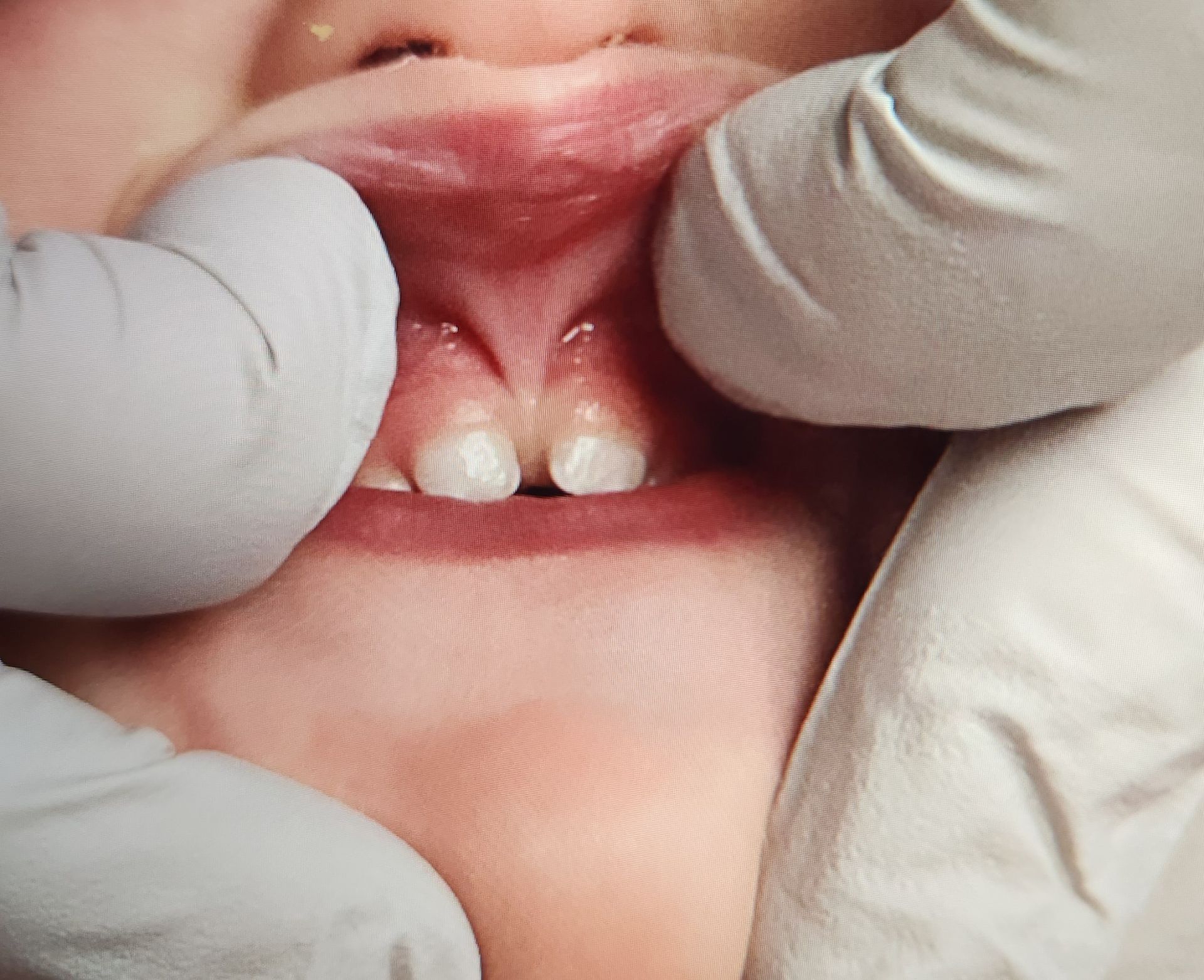Pediatric Pre & Post Tongue Tie Care
A tongue or lip tie in children is a congenital condition characterized by a shorter-than-normal lingual frenulum, the strip of skin beneath the tongue, or labial frenulum, the strip of skin connecting the upper lip to the gum. Unlike its initial impact on infants—such as breastfeeding challenges—a tongue or lip tie in older children can significantly affect speech development, dental health and airway concerns.
In pediatric cases, a restricted tongue may hinder proper speech articulation, making it difficult for the child to pronounce certain sounds or words clearly. This can lead to social anxiety or reduced self-confidence, complicating social interactions and academic performance. Similarly, a lip tie may contribute to speech issues and can also cause dental problems like gap teeth or difficulty in maintaining oral hygiene. In some instances, children with untreated tongue or lip ties might also struggle with proper food consumption, which can result in messy eating or digestive issues like bloating and flatulence.
Diagnosing a tongue or lip tie in children involves a straightforward physical examination by a primary care pediatrician, speech therapist, myofunctional therapist or pediatric dentist.
For speech issues, a speech therapist often conducts an assessment to identify any pronunciation or articulation challenges the child may be facing. This assessment complements the evaluation made by a pediatrician or a dental professional, who observes the tongue or lip's range of motion and considers any reported symptoms.
The grading scale for tongue and lip ties varies in its severity, impacting how much the frenulum limits natural movement. More severe cases usually warrant quicker intervention, especially if speech development is noticeably lagging or dental or airway issues are emerging or increasing.
Full and optimal treatment of tongue and lip tie often requires several weeks of functional exercises tailored to your child's needs by a myofunctional therapist for strengthening the tongue and 1-3 CranioSacral therapy visits to balance the child's body and oral tension prior to a quick surgical procedure called a frenectomy. This procedure, involves snipping the frenulum to allow for greater movement of the tongue or lip.
Following this process can result in improvements in speech, airway and dental health. After the release, speech therapy, myofunctional therapy and CranioSacral therapy will be recommended to fully address articulation issues, airway concerns and bolster the child's functional skills.






